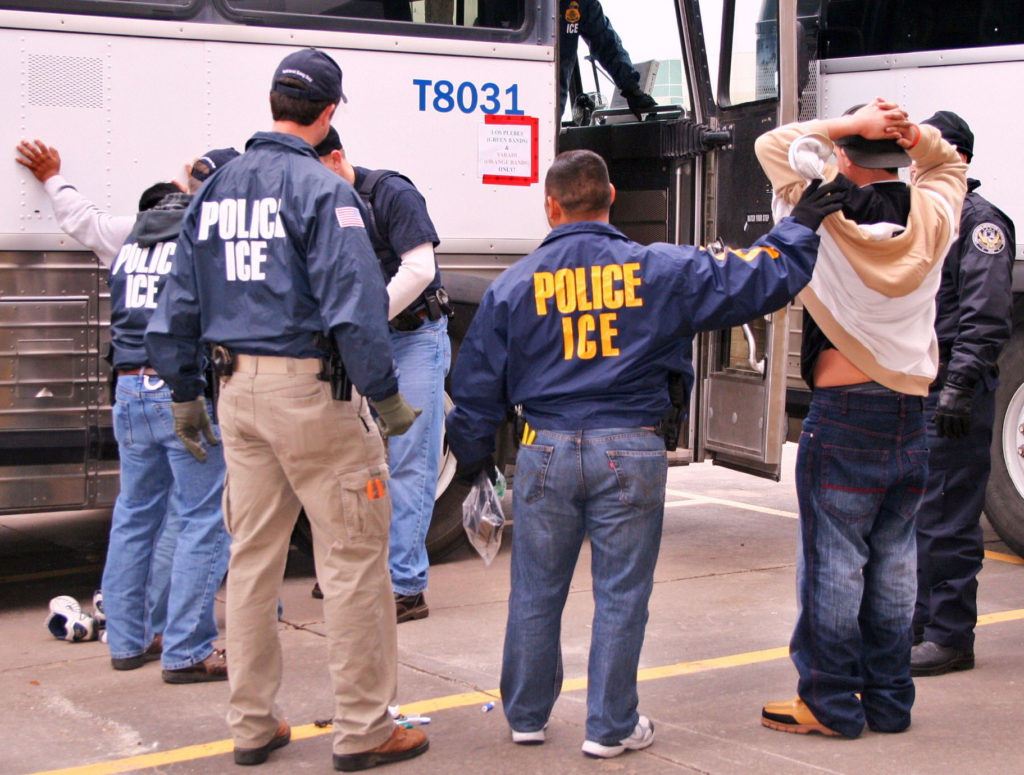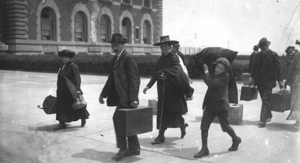Finding a lawyer at the best of times is difficult, but when immigration and citizenship is involved it can seem so much harder. Here are some tips to get you started:
Knowledgeable:
This is key when you are in the market for any lawyer, obviously, but it is so important it bears listing first and foremost. Law practice is complex, and laws are added, amended, changed, or made obsolete every day. It is important that they not just understand the law as they knew it when they passed the bar, but the law as it stands today, with all the changes that have taken place. Also key is making sure that your lawyers is trained in the specific laws of your state, as many laws vary based on location. If your lawyer doesn’t have the right information he or she can’t provide you with the best legal representation.
Resources:
Your State Bar, National Immigration Law Center, American Immigration Lawyers Association are all good places to start. Your local state bar will be able to connect you with licensed lawyers in good standing, and point you in the direction of specialty practice if you have specific needs. NILC is a non-profit organization devoted to assisting low-income individuals with immigration services they can afford. AILA is a national association of attorneys and legal experts who can teach and/or practice immigration law, so this is a good place to begin a search and feel good that you are finding someone well-versed in immigration policy. An AILA membership is not required to practice immigration law, so membership can show that they have dedicated themselves specifically to the practice.
References:
Ask friends, coworkers, family, or anyone else you know if they know an immigration lawyer. Even if they haven’t been through immigration processes themselves, they may know someone who has, or have heard of a success story in your area. People love to talk about good experiences, and love to talk about bad ones even more. Word of mouth, online reviews, and references from clients of the lawyers are all helpful when beginning your search. When you interview your lawyer, make sure to ask them for references from former clients, a reputable lawyer should be happy to introduce you.
Speaks Your Language:
Literally and figuratively. It is important that you fully understand your lawyer and that they understand you. Multi-lingual immigration lawyers exist is most places, and it is important to make sure that they are fluent in the language you speak natively. It is also important that you speak with them in person, trust them, and feel comfortable putting your future into their hands, so make sure that your personality and goals as client and lawyer are a good match. Honesty is key, and so is communication. Make sure that they are willing to educate you on your case so that you full understand their responsibilities, and your own.
Costs:
Make sure that you understand the fees and costs. Some attorneys charge hourly fees while working on your case. Some charge a fee per task, set in advance. Some charge one single fee for the entire case, beginning-to-end. Make sure that you understand the pricing of your lawyer, and that you compare prices of more than one attorney to ensure you get one that fits your budget.


 Immigration policy rose in national importance in the 1920s for a couple of reasons. “Economic concerns, nationalism brought about by World War I, and a tilt toward a smaller percentage of new immigrants with English as their native language contributed to moving public sentiment towards restricting immigration”. The emergence of “Eugenics” as a public policy tool in policy circles and Western philosophy also played a role. “Eugenics is the belief in improving the qualities of the human race by preventing the reproduction of people deemed to have genetic defects or undesirable characteristics and/or encouraging increased reproduction by those with supposed desirable inheritable characteristics.” According to Anderson, this widespread belief in eugenics was a decisive factor in creating the restrictive immigration laws in the 1920s. Natives in Canada and the United States were in favor of the status quo of their countries, so they did not want a large amount of immigrants they deemed as “undesirable” tainting their countries national structure.
Immigration policy rose in national importance in the 1920s for a couple of reasons. “Economic concerns, nationalism brought about by World War I, and a tilt toward a smaller percentage of new immigrants with English as their native language contributed to moving public sentiment towards restricting immigration”. The emergence of “Eugenics” as a public policy tool in policy circles and Western philosophy also played a role. “Eugenics is the belief in improving the qualities of the human race by preventing the reproduction of people deemed to have genetic defects or undesirable characteristics and/or encouraging increased reproduction by those with supposed desirable inheritable characteristics.” According to Anderson, this widespread belief in eugenics was a decisive factor in creating the restrictive immigration laws in the 1920s. Natives in Canada and the United States were in favor of the status quo of their countries, so they did not want a large amount of immigrants they deemed as “undesirable” tainting their countries national structure. Stuart Anderson said, “The surest way to change the law in America is not by lobbying Congress but by convincing enough of the public the laws must be changed.” When talking about the immigration debate in politics, there seems to be many political pressures felt by policy makers to make the immigration policies we see today. Political pressures that cause policy, however, are different for every country because of geographical location, wealth, and beliefs and values. For example, in 1924, the United States Congress was forced to establish the U.S. Border Patrol to catch illegal Hispanic immigrants who were trying to run across the border to the United States. This is an example of the United States’ geographic location causing policy change. Canada does not have an illegal immigration problem because it only boarders the United States, so they do not need to put a lot of political resources in containing illegal immigration.
Stuart Anderson said, “The surest way to change the law in America is not by lobbying Congress but by convincing enough of the public the laws must be changed.” When talking about the immigration debate in politics, there seems to be many political pressures felt by policy makers to make the immigration policies we see today. Political pressures that cause policy, however, are different for every country because of geographical location, wealth, and beliefs and values. For example, in 1924, the United States Congress was forced to establish the U.S. Border Patrol to catch illegal Hispanic immigrants who were trying to run across the border to the United States. This is an example of the United States’ geographic location causing policy change. Canada does not have an illegal immigration problem because it only boarders the United States, so they do not need to put a lot of political resources in containing illegal immigration. After the Second World War, Canadian immigration policy became a little less race oriented and geared more toward economic profitability. Finally in 1962, Ellen Fairclough, Minister of Citizenship and Immigration basically eliminated racial discrimination by implementing a new Canadian immigration policy. This new immigration policy stated that if an immigrant wanted to come to Canada and was not sponsored, as long as that immigrant proved his educational skill or quality that seemed desirable for Canada, he or she was allowed to immigrate without racial bias. Whereas the United States took a more humanitarian approach to immigration policy reform in the 1960s, Canada’s immigration reform was geared more towards the economic needs of Canada, as evidenced by its point based system.
After the Second World War, Canadian immigration policy became a little less race oriented and geared more toward economic profitability. Finally in 1962, Ellen Fairclough, Minister of Citizenship and Immigration basically eliminated racial discrimination by implementing a new Canadian immigration policy. This new immigration policy stated that if an immigrant wanted to come to Canada and was not sponsored, as long as that immigrant proved his educational skill or quality that seemed desirable for Canada, he or she was allowed to immigrate without racial bias. Whereas the United States took a more humanitarian approach to immigration policy reform in the 1960s, Canada’s immigration reform was geared more towards the economic needs of Canada, as evidenced by its point based system. Opposition towards immigration began in the late 19th century as the immigrants coming into the United States (Irish Catholics, Germans, Chinese, Spanish) were ethnically different than the immigrants who had already established themselves (English Protestants). Eventually the opposition became strong enough to create political pressures that called for immigration restrictions during the early 20th century.
Opposition towards immigration began in the late 19th century as the immigrants coming into the United States (Irish Catholics, Germans, Chinese, Spanish) were ethnically different than the immigrants who had already established themselves (English Protestants). Eventually the opposition became strong enough to create political pressures that called for immigration restrictions during the early 20th century. “What do the American people want immigration to do for the United States”[1]? According to George Borjas, one of the leading labor economists who specialize in immigration issues, this should be the fundamental question in the modern immigration debate. Technically, everyone who now lives in the United States has some ancestor that immigrated to the United States from abroad and there was a point in time where there was no immigration policy. As the United States became wealthier and wealthier, an immigration policy became necessary to keep overpopulation and major wealth divisions from happening. Typically, when policy makers of the world focus on the immigration debate, they seem to use economics as their main basis for policy change. This is how immigration policy is implemented in most countries. If immigration were to make the native people economically worse off, why wouldn’t a country impose a strict immigration policy? On the other hand, if immigration were to make the native population economically better off, why wouldn’t a country impose a more lose immigration policy? This paper will describe the political forces in Canada and the United States that led to their different historic approaches to immigration, and then analyze their respective current policies in both political and economic terms.
“What do the American people want immigration to do for the United States”[1]? According to George Borjas, one of the leading labor economists who specialize in immigration issues, this should be the fundamental question in the modern immigration debate. Technically, everyone who now lives in the United States has some ancestor that immigrated to the United States from abroad and there was a point in time where there was no immigration policy. As the United States became wealthier and wealthier, an immigration policy became necessary to keep overpopulation and major wealth divisions from happening. Typically, when policy makers of the world focus on the immigration debate, they seem to use economics as their main basis for policy change. This is how immigration policy is implemented in most countries. If immigration were to make the native people economically worse off, why wouldn’t a country impose a strict immigration policy? On the other hand, if immigration were to make the native population economically better off, why wouldn’t a country impose a more lose immigration policy? This paper will describe the political forces in Canada and the United States that led to their different historic approaches to immigration, and then analyze their respective current policies in both political and economic terms.